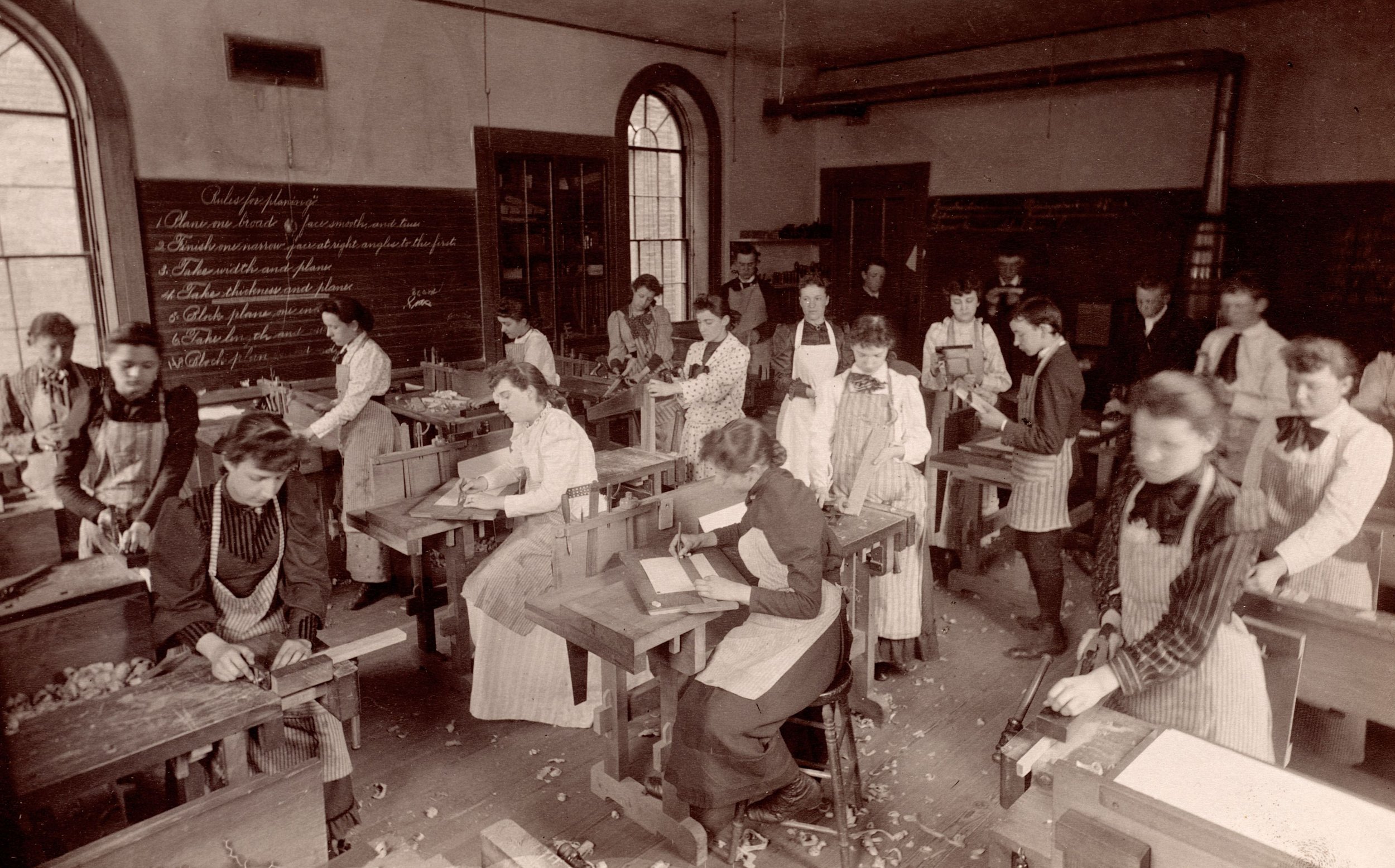In past times as in the present, Cape Codders have always looked for ways to increase their household income. From the Civil War until World War I, the Cape population fell by more than 25% and money was extremely scarce. The golden age of maritime Cape Cod had been in the first half of the 19th century ended at the time of the Civil War. During the years after the war, only a minority of the residents held jobs which gave them enough money to cover all of their expenses. Cottage industries sprang up all over the Cape as people tried to offset the long term economic hardships.
In the late 1800s, a program had been started in the Scandinavian countries known as the Sloyd Movement. It encouraged schools to begin the teaching of handicrafts as part of the education into the world of work. In Norway, Denmark, Finland, and Sweden, people would purchase raw materials with profits made from their harvests, and these materials would be shaped and configured into handicraft items during the winter. The next summer, these completed crafts could be sold to provide funds for next year’s projects and family needs. Perhaps because of the migration of Finns to the area in the late 1800s, Cape Codders soon realized that this could help them as well, as tourism was beginning grow.
Uno Cygnaeus
Uno Cygnaeus of Finland was a prime mover in the development of this form of education. It is interesting that the word slöjd, as the movement became called, is the Swedish word for crafts and not the Finnish word where it was founded. Cygnaeus set up teacher training schools to prepare for this technical training. The movement reached Boston in 1888 with the founding of the Boston Sloyd School.
Class of girls woodworking. Lyman Sloyd School, East Boston, 1892.
Yarmouth was the first town on Cape Cod to employ Sloyd training in its schools, thanks to funding by Miss Mabel Simpkins. Yarmouth set up its Sloyd training in January of 1900. It was first reported in the newspapers in September of that year when Yarmouth students won awards for their Sloyd projects at Barnstable County Fair. In 1900 the Fair was held in Barnstable Village, just a short distance east of the Barnstable village center, not on Route 151 in Falmouth as it is today.
The newspaper reported, “Miss Isabel Shove, Supervisor of Sloyd in the Town of Yarmouth was in charge. Demonstration lessons were given (at the fair). Girls and boys of the Grammar schools are taking the subject of Manual Training. The pupils are taught to use both the right and left hand with equal skill. A large display of articles was shown [at the fair]. In this department of school work, Yarmouth leads all other towns on the Cape, and in several respects must be quoted as the banner town.”
Going to the Barnstable County Fair was a major event in the days before radio and television. Schools were given the day off so that students and faculty could attend. At least one year the school committee voted to allow “the choice of the Fair days be left with the different schools.”
The agreement to teach Sloyd was contracted between Mabel Simpkins and the Yarmouth Selectmen. Their contract stipulated that the Sloyd system of manual training was to be taught in three schools; “one each on the north, south, and west sides of the town on the following conditions, viz: That the town agrees to raise $500 per annum toward the support of said schools for five consecutive years, beginning with the current year [1900]; provided Miss Simpkins will agree to pay the entire cost of the maintenance of said schools for five years, over and above the $500 raised by the town.”
Young women learning cooking at the Sloyd school in Yarmouth Port.
Thus the program owed its start to the generosity of a local citizen who wanted all children to benefit from the training. Isabel Shove was the first instructor hired by the town.
The following year, Yarmouth funded the program with $500 as agreed for the Sloyd school. Miss Shove, at a May 6 teachers’ meeting, outlined a three year course in cardboard work below the 7th grade and explained a high school course that might be possible where no bench work is available. Cardboard work included learning how to measure, cut, and fold, and students learned how to make a square box, a cubical match case and progressed to a 12 sided basket and square and triangular prisms.
Thus the Sloyd curriculum developed in the Yarmouth schools. Early on, the building located next to the Yarmouth Port school became the Sloyd building where manual arts were taught. The town continued to give $500 a year funding to the program and shortly there were annual exhibitions of manual arts. These included sewing by the girls, Sloyd work by both sexes of the grammar grades, and boys’ woodworking. Woodworking taught measuring and cutting and projects were generally small, to require less material. They included cutting boards, sugar scoops, clothes hangers, stirring spoons and dish drainers.
Postcards were printed with the picture of Yarmouth Port’s Sloyd school on them. On the back of a postcard written in 1911 was written “At the left is the big window which frames a most beautiful ocean view. How I love it!” This writing is dramatic proof of the lack of wooded areas north of Route 6A that existed from colonial times through World War 1. Today, that view is much different.
The former Sloyd School building with its view of the ocean. It is now a private home west of the Yarmouth Port fire station.
While students learned some of the latest educational techniques, in other ways schools hadn’t change much. Everyone drank out of the same dipper when they wanted water, and those “in the know” always drank right next to the handle, figuring no one else would drink there! Teaching hygiene wouldn’t become part of the health curriculum until much later!
Grace Smith, who had been the Sloyd and Manual Training teacher in Yarmouth following Isabel Shove, resigned in 1913 to teach in her home town of Springfield.
Sloyd was taught to teachers at the Hyannis Normal School, the teacher training school on Cape Cod. In July of 1922, the Normal School constructed a new building, east of the old high school. In the basement of this building were two rooms, both 19’ x 28’ – the east room for Sloyd and the west for Domestic Science. These room sizes were about half the size of today’s regular classrooms.
The Hyannis Normal School, now Barnstable Town Hall on Main Street.
The tight times of the 1930s led to consolidations in schools, and curriculum slowly evolved into the Home Economics, Industrial Arts, and Art curricula which are still with us in some school districts.
Not all schools felt it was important for students to be able to use both hands with equal dexterity. Those that didn’t adopt Sloyd methods often required that all students write, eat, and use scissors using the right hand only. What a shock this must have been for the child who transferred from a district that taught the Sloyd method. This was after Sloyd had tried to make them use both hands with equal dexterity. Progressive schools continued letting left-handed students use that hand in learning to write, but some school districts continued teaching right hand only until 1950.
And what ever happened to Yarmouth’s Sloyd School building? It still exists as a private dwelling, located between the Yarmouth Port Fire Station and the Village Store.
Researched and written by Caroline Ellis, Sue Bonnell, and Duncan Oliver
We’d also like to acknowledge a sharp eyed reader who corrected our origin of the word slöjd.
The former Sloyd School in Yarmouth Port today.








